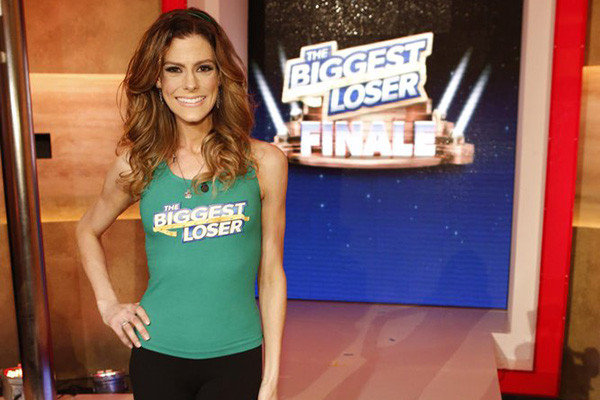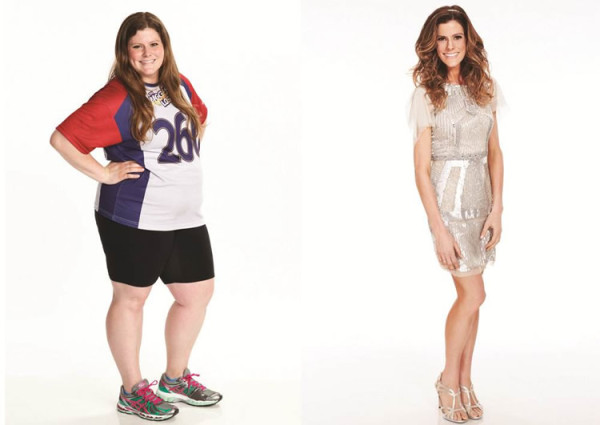Biggest Loser Weight Loss
by: Angela Spaid, RD
A collective gasp and the dropping of jaws seemed to be the overall reaction to Rachel Frederickson’s
big reveal on the Biggest Loser Finale. This, followed by an outpouring of status updates on Facebook,
suggests that the reaction was not limited to the trainers and fellow contestants watching firsthand.
Admittedly, I have a love-hate relationship with The Biggest Loser and did not see the finale the night it
aired. However, the next day the buzz spread quickly. Without seeing pictures of Rachel and only
hearing of her final weight and overall weight loss, as a Dietitian, I was instantly alarmed. With a
starting weight of 260 pounds, Rachel lost a shocking 155 pounds, putting her overall weight loss
percentage at 60%. At a height of 5 foot, 4 inches, Rachel’s final weight of 105 pounds puts her BMI at
18 which classifies her as being “underweight”. Perhaps even more disturbing is that this drastic
transformation occurred in less than 5 months. Numbers aside, the next thing I did was furiously
Google pictures from the finale. My reaction shifted from one of shock and concern to, well, sadness.
Looking at pictures, I thought Rachel looked gaunt, unhealthy and no longer appeared a vibrant and
strong 24 year-old woman. I don’t say this to criticize her but to point out that the ultimate marker of
successful weight loss should not be the number on the scale. I also fear that the positive reinforcement
she has received for achieving this drastic weight loss will likely lock her into a pattern of guilt and
shame when she is unable to continue at this weight without also continuing unhealthy and detrimental
eating and exercise practices. She has admitted to working out 6 hours a day between the time she left
the show and the finale which is excessive and unsustainable.
So, is there a healthy rate of weight loss? You bet. Any Registered Dietitian will give you the same
answer to that question. The recommendation is for a ½ pound to 2 pounds of weight loss per
week and we consider the 2 pounds to be a great accomplishment! This rate of loss often means
you are making behavioral changes that will be long-lasting rather than succumbing to short-lived,
unsustainable, over-restricted fad diets. Furthermore, it ensures that you will preserve your lean body
mass and maintain a healthy metabolism. It is possible to eat too few calories in a day. When you
over-restrict, your body goes into starvation mode, conserving the energy it has in order to survive.
Subsequently, your metabolism takes a nose dive and your body starts producing cortisol which is a fat
synthesizing hormone. To put it more simply- you lose your muscle mass, become weak and lethargic
and the food you do eat your body stores as fat. Furthermore, your immunity takes a hit so you are
more susceptible to illness and slower to recover from it. Over time there can be a huge impact on bone
health which increases the likelihood of fracture and injury. To sum it up, the motto for rate of weight
loss? Slow and steady wins the race.
How do you lose a pound a week? There are 3500 calories in 1 pound so to lose a pound over a
week you should aim to reduce your intake by 500 calories a day. An easy place to start is looking at
discretionary intake- sugary beverages or nutritionally barren foods such as sweets and candy. This
doesn’t have to mean eating teeny tiny portions either! Think volumetrics- high nutritional quality, low
calorie density. Load up on fruits, vegetables and whole grains and non-animal protein to feel satisfied
while also keeping calorie count low.
Sadly, I have yet to hear anyone from the Biggest Loser show comment on what happened with Rachel
in a way that does not criticize her or shame her but simply acknowledges that this was an unhealthy
transformation. My wish is that society can embrace the notion that no matter the number on the
scale, it is possible to be healthy at many different weights and that thinner is not always better.




